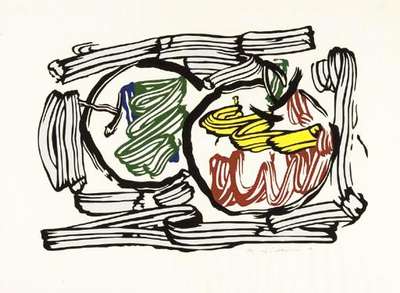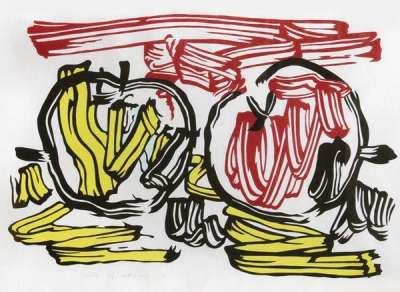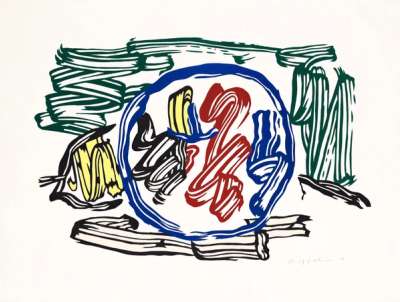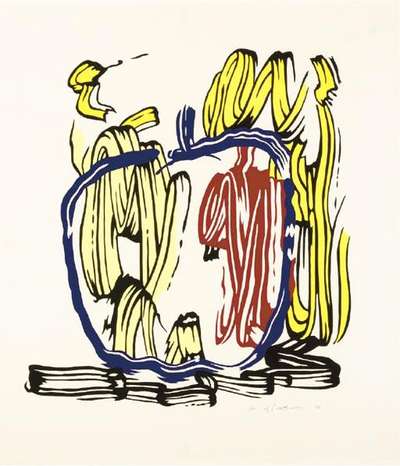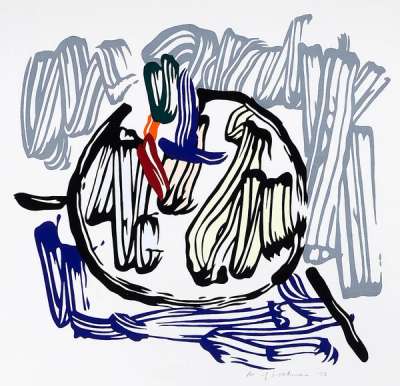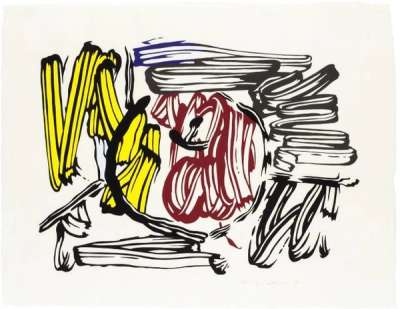
Red Apple

Red Apple
Signed Print
Roy Lichtenstein
£7,000-£11,000Value Indicator
$14,000-$22,000 Value Indicator
$12,500-$20,000 Value Indicator
¥60,000-¥100,000 Value Indicator
€8,500-€13,500 Value Indicator
$70,000-$110,000 Value Indicator
¥1,320,000-¥2,070,000 Value Indicator
$9,000-$14,000 Value Indicator
AAGR (5 years) This estimate blends recent public auction records with our own private sale data and network demand.
There aren't enough data points on this work for a comprehensive result. Please speak to a specialist by making an enquiry.
Medium: Woodcut
Edition size: 60
Year: 1983
Size: H 77cm x W 93cm
Signed: Yes
Format: Signed Print
TradingFloor
Track this artwork in realtime
Watch artwork, manage valuations, track your portfolio and return against your collection
Track auction value trend
Auction Results
| Auction Date | Auction House | Location | Hammer Price | Return to Seller | Buyer Paid |
|---|---|---|---|---|---|
| April 2010 | Christie's New York | United States | |||
| May 2005 | Freeman's Online | United States |
Meaning & Analysis
Roy Lichtenstein’s Red Applewas created as part of his Seven Apple Woodcuts of 1983. In this sequence, the artist turns his attention to the autographic mark-making of abstract expressionists and the ingrained concept of still lifes. The Seven Apple Woodcuts abstract the composition of Lichtenstein’sSix Still Lifes of 1974. The series also sets the tone for the artist’s later exploration of painterly gestures in his Brushstroke Faces of 1989.
Red Appledoes not attempt to commodify brushwork according to Lichtenstein’s signature aesthetic. The backdrop of the print is entirely white and stripped of all patterns. Stylistically familiar areas are scarce in this work, but its rich colour palette is distinctly ‘Lichtensteinian’. The contours of the simplistic apple in the middle of the composition are achieved through bold simulations of black brushstrokes. The outlines are disrupted in several places, letting the dark red colour spill out over the bottom half of the canvas.
There is a rhythm to Lichtenstein’s energetic sweeps, as he ridicules abstract expressionist beliefs regarding the power of brushwork. The unrefined quality of his imitation makes the beholder forget that the work is in fact a woodcut. Lichtenstein reduces the inanimate object to an essential shape, trusting that the beholder will recognise the subject matter all the same. He follows in the footsteps of renaissance and impressionist masters, demonstrating the endurance of still lifes as an art historical genre.
Roy Lichtenstein, born in New York, 1923, is a seminal figure in the Pop Art movement, renowned for his comic book and advertisement-inspired artworks. His transformative journey from classical painter to Pop Art pioneer began with his iconic piece, Look Mickey, marking the fusion of painting with pop culture. Lichtenstein’s works, including Whaam!, Drowning Girl, and Crying Girl, blend parody and satire, challenging the boundaries between popular culture and ‘high art’. With over 5,000 pieces to his name, Lichtenstein’s enduring influence resonates in contemporary art, his works celebrated in prestigious institutions worldwide.
